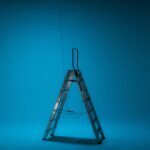Any homeowner wants to avoid plumbing complications that occur in their residential properties. Homeowners experience true nightmares because of their leaky pipes in combination with blockages and infrastructure deterioration. The modern solution of pipe relining helps to revamp various pipeline systems in the market today. The modern pipe relining process has taken hold as a time-saving solution to repair damaged pipelines while sparing your yard and day-to-day activities. Curious about how it works? This article explores the rising popularity of pipe relining among homeowners by exploring its production methods and advantages.
Traditional Methods of Fixing Pipes
Traditional repairs of pipes normally require extensive invasive procedures. Extraction is one widely practiced method that requires workers to dig out the terrain to observe faulty areas. The pipe maintenance creates problems for landscaping areas and driveway surfaces which must be repaired at extra costs.
Procedure for replacing complete pipe sections serves as an alternative repair method. Pipe repair through this approach needs extensive labor effort and a long duration of work time. Repairs of pipes typically lead to extended delays that burden homeowners within their homes.
Specific leaks or cracks can be resolved through the less drastic method of patching. The temporary nature of patches makes them ineffective because they fail to address hidden problems in the plumbing system.
Traditional repair methods present distinctive difficulties causing homeowners to become irritated with their pipework procedures. Property damage alongside extensive repair needs elevates the stressful circumstances homeowners face during times of water damage.
The Process of Pipe Relining
Therapeutic pipe relining uses modern and time-saving techniques. A complete inspection occurs using modern camera technology. The assessment of pipe condition becomes possible because experts utilize this system.
A tailored cleaning technique follows the assessment of the pipes. High-pressure water jets break up and wash away accumulated debris together with roots and buildup from inside the pipes. Maximum adhesion requires that the surface achieves perfect smoothness during this step.
The cleaned pipe section receives introduction to epoxy resin lining. The liner increases in size while connecting to the original pipe walls until it reaches its final cured state.
A further inspection takes place after curing to verify proper installation of the epoxy resin liner which requires only a three-hour curing process. The result? A new lining made of epoxy resin transforms existing plumbing systems into more durable components while leaving your property alignment untouched.
Advantages of Pipe Relining
The implementation of Pipe relining provides various advantages beyond standard pipe repair techniques. This method interferes with your property to a minimal extent. Pipe relining only needs small access points unlike damaging excavation methods that require deep digging.
Another significant advantage is durability. The new lining installation forms a strong protective layer to prevent leaks and root entry and contributes to extended pipe lifespan of many decades.
The long-term financial benefits emerge from this approach due to its cost-effectiveness. Even though pipe relining costs similar to traditional maintenance, its ability to decrease long-term repair requirements enables you to save money.
The reduction in digging for pipe relining creates two benefits: less waste output and protection of existing property infrastructure.
Pipe relining provides quick results. Job completion requires only a few hours or days to finish so you can resume your regular routines after the process.
Cost and Time Comparisons with Traditional Methods
The decision for pipe repairs mainly depends on how much it costs and how much time it requires. Traditional pipeline maintenance requires deep digging processes which results in higher expense while requiring extended periods for restoration work.
Organizations prefer pipe relining to traditional methods because of its less disruptive nature. The duration to accomplish such jobs ranges from a single day to two days. The efficient nature of the procedure enables organizations to reduce their overall labor expenses substantially.
The total expenses depend significantly on material expenses. During traditional repairs the work requires installing new pipes while using further materials to restore the trenches. The procedure of pipe relining requires polyurethane resin to attach to the existing pipes which in turn minimizes material loss and treatment costs.
The reduction in disruptions leads to shorter service interruptions for houses and businesses using plumbing infrastructure. The effectiveness of pipe relining gives you a dependable solution that you do not have to endure the long delays that traditional approaches create.
Frequently Asked Questions about Pipe Relining
The technique of pipe relining generates numerous questions among people. These inquiries about innovative pipe relining technology should give you a better understanding of this solution.
What is pipe relining?
This contemporary method helps fix broken pipes through inserting liners which eventually develop into renewed pipe interiors. A liner goes into the current pipe before hardened material forms a resilient internal coating.
What is the projected lifetime duration of pipe relining?
A correct installation of pipe relining generally produces lasting effects between 50 and 100 years. Professionals prefer pipe relining because it delivers a long service life of up to 100 years while traditional repair methods often need recurring maintenance activities.
The application of pipe relining extends to various types of piping materials.
The application remains successful with PVC, clay and cast iron materials but it does not match every possible case for pipe relining. Pipe relining professionals will assess whether your pipes meet the criteria for this repair method.
The completion of work requires I obtain both permits and post-installation inspections.
The majority of local municipal authorities need to inspect all plumbing repair work before final approval. Before starting the project check with your local authority because their regulations about this method might differ from area to area.
How soon can I begin using my plumbing system after this process takes place?
After the lining material cures in approximately several hours you can safely employ your plumbing system normally since no leakage or destruction will occur.
Homeowners can determine the suitability of this innovative approach through the clarification of these typical questions about pipe relining. Review the benefits of pipe relining for fixing pipeline problems because it delivers solutions that save costs and reduce property maintenance disruptions during life cycles.
















